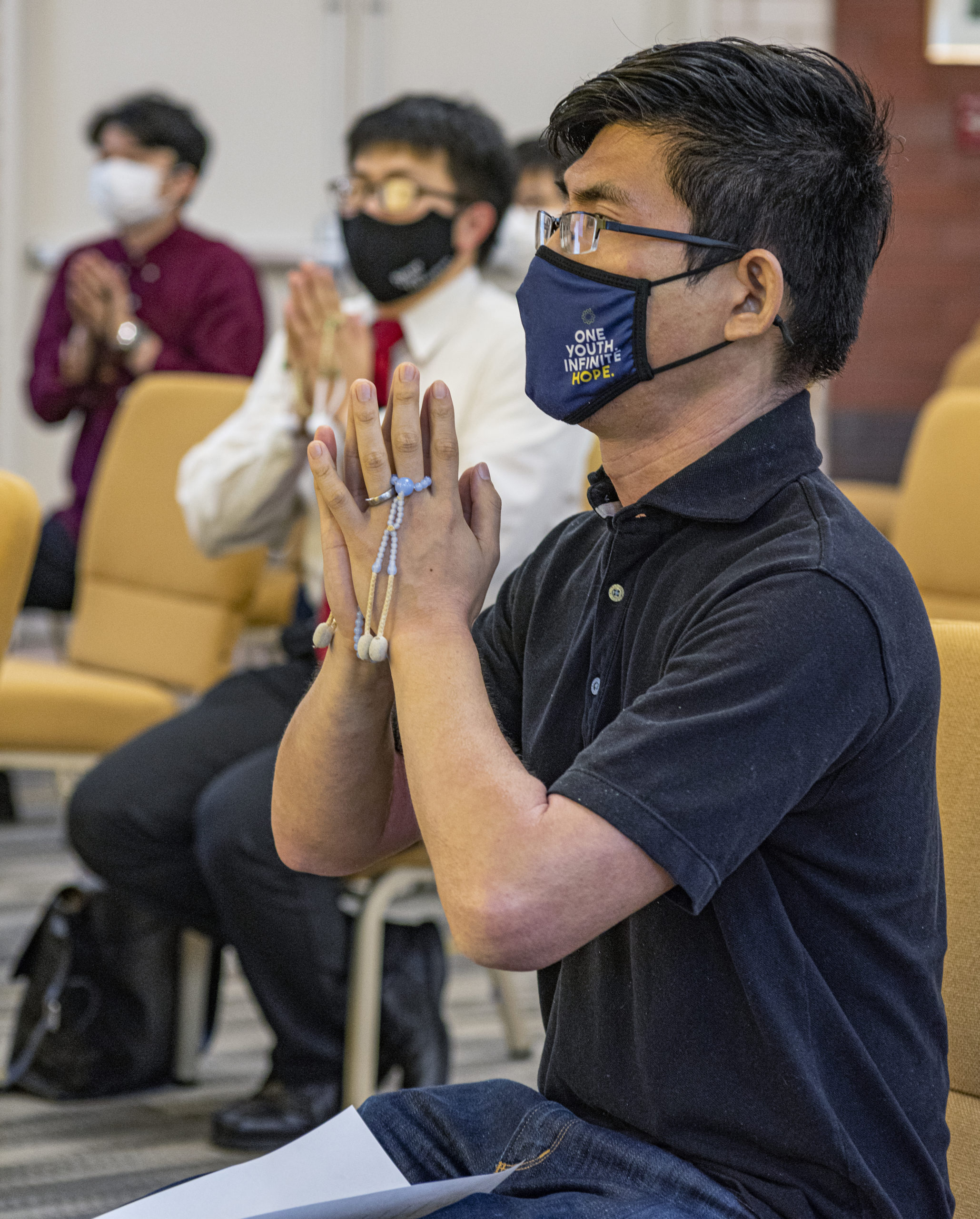Feb. 16 will mark 800 years since Nichiren Daishonin’s birth. In his nearly 61 years of life, the founder of Nichiren Buddhism established a Buddhist practice accessible to all people that, centuries later, has spread and is practiced by people throughout the world.
After two years of uncertainties and challenges brought on by the coronavirus pandemic, we can learn from Nichiren’s example of facing and overcoming adversity to lead a life of utmost value.
During his years in exile on Sado Island,[1] Nichiren solidified his teaching, producing several essential writings. Ikeda Sensei writes:
In “On the Buddha’s Prophecy,” composed on Sado, Nichiren writes: “I have suffered difficulties day after day and month after month. In the last two or three years, among other things, I was almost put to death. The chances are one in ten thousand that I will survive the year or even the month.”[2] It was under these indescribably harsh conditions of exile that he boldly predicted a future where the Buddhism of the Sun would illuminate the entire world.[3]
He survived his exile, returned to Kamakura and moved to Mount Minobu, living out his years raising and supporting his disciples while lecturing on and further clarifying his teaching. And today, more than 700 years later, Soka Gakkai members around the world live and thrive based on his teachings—fulfilling his vision that the Buddhism of the Sun would illuminate humankind.
Without a doubt, we will all continue to face difficulties and uncertainties. Yet Nichiren teaches that each of us can bring forth our inherent Buddha nature by chanting Nam-myoho-renge-kyo. However harsh our reality, we can elevate our life state and strengthen our resolve to take action now to create the bright future we envision.
Through striving in our Buddhist faith, practice and study, we bring forth the wisdom, courage, resilience and ingenuity necessary to break through any impasse.
Sensei continues:
The Daishonin teaches us, “When one practices the Lotus Sutra [in the Latter Day of the Law], difficulties will arise, and these are to be looked on as ‘peaceful’ practices.”[4] When we chant Nam-myoho-renge-kyo and take action to overcome the hardships we encounter, we are truly practicing Nichiren Buddhism and are able to accumulate great good fortune.[5]
We can find exemplary models of this principle in Nichiren and our founding Soka Gakkai presidents—Tsunesaburo Makiguchi, Josei Toda and Daisaku Ikeda. From these mentors in faith, we learn how to make dynamic progress and develop lives of absolute happiness, fortitude and fortune.
In his Jan. 7, 2021, message to the first Soka Gakkai Headquarters Leaders Meeting, marking the start of the crucial decade toward the organization’s centennial in 2030, Sensei recalls calling out to the members on New Year’s Day 1961: “Let us fight with all our might! I am determined to create a hundred years’ worth of history in one year.”
He continues:
Having vowed to create a hundred years of history in a single year, I took action to blaze new trails forward based on powerful prayer. It was a shared journey of mentor and disciple in which I constantly engaged in dialogue with Mr. Toda in my heart. …
If we unite in spirit with our mentor and in shared purpose with our fellow members, we can bring forth infinite strength, expand our circle of friendship, activate the protective functions of the universe and open the way to victory. All our prayers will be answered, and we will bring peace and prosperity to the lands where we have chosen to fulfill our vow for kosen-rufu.
The coming decade is an extremely important time, when we must work to resolve the challenges facing our planet and to build a new culture for humankind, a new human civilization, based on respect for the dignity of life and human revolution.[6]
Let’s resolve to “create a hundred years’ worth of history in one year” and truly make this a year of dynamic progress toward building “a new culture for humankind”!
—Prepared by the SGI-USA Study Department
References
- Sado Exile: Nichiren Daishonin’s exile to Sado Island off the western coast of Japan from October 1271, immediately following the Tatsunokuchi Persecution on Sept. 12, 1271, through March 1274. During this perilous time, he composed many important works, including “The Opening of the Eyes” and “The Object of Devotion for Observing the Mind,” and offered encouragement to his followers. ↩︎
- “On the Buddha’s Prophecy,” The Writings of Nichiren Daishonin, vol. 1, p. 402. ↩︎
- July 2020 Living Buddhism, p. 4. ↩︎
- The Record of the Orally Transmitted Teachings, p. 115. ↩︎
- July 2020 Living Buddhism, p. 5. ↩︎
- Feb. 5, 2021, World Tribune, p. 3. ↩︎
You are reading {{ meterCount }} of {{ meterMax }} free premium articles

